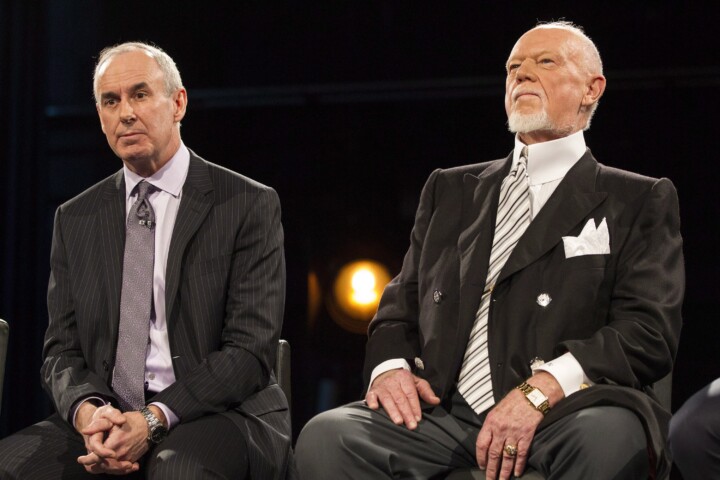One constant refrain during the debates among Canadian conservatives is that the movement is ill-served by focusing on what we call the rural-urban split, the predilection of rural seats skewing Tory while big city ridings are dominated by Liberals and New Democrats.
Some believe that this is a distraction that prevents the movement from modernizing into a more relevant political force. The logic dictates that by shedding that mindset, conservative parties can be more competitive.
They are wrong, but not for the reasons they think.
Back beyond the arrival of Jacques Cartier and the founding of New France, Canada and its constituent parts were rural societies. Most Canadians lived in sparsely populated areas, with the largest population centres being roughly equivalent to a moderately sized city by today’s standards.
According to Statistics Canada, in 1851, nearly nine in 10 Canadians were rural dwellers, and the economy was driven by primary sector industries, such as agriculture, forestry and mining. Between 1921 and 1931 the percentage of the population who lived in rural areas dropped below 50 percent. During that period, Conservatives held government in pre-Confederation Canada and federally thereafter for a total of 44 out of 66 years.
From the 1930s on, the rural population has steadily declined to its present level of around 15 percent. During that time, the Liberals have held power federally for 60 out of 91 years.
And it is not just a Canadian phenomenon. Every major western industrialized nation sees this pattern hold. Americans talk about “red states versus blue states,” while people in the U.K. reflect upon how different politics in southern England is once you get outside the gravitational pull of London.
The change in where Canadians live has meant a change in how we live.
And it’s not just conservative movements that are challenged in navigating this urban-rural split. One need only reflect on the character of New Democratic politics in big city Canada in 2021 as opposed to the version that sprang up among Prairie farmers in the 1920s and 1930s and was defined by the co-operative movement.
The change in where Canadians live has meant a change in how we live.
Rural life is defined by lower concentrations of population and more personal space. Government at the local level is modest in its service delivery and its regulatory demands. There are few differentiations based on social class, with rich and poor often living side by side. Social groupings skew more toward mutual aid and community priorities rather than advocacy and lobbying.
The exchange for more personal volition is fewer official supports. You act as your own public utility, maintaining your own well and septic, and hauling away your own garbage and recyclables. It is a social and cultural environment that naturally skews to less demand for government intervention by expectation setting.
In contrast, higher density living in an urban core means a higher emphasis on policies related to social cohesion and arbitrating relations between people, such as settling disputes over property lines, noise or behaviours that might have an impact beyond a condominium wall. Open spaces like parks are communal, requiring rules for use and conduct.
Government also provides buses and subways to get you from one place to another, the pipes that bring you safe, clean water to drink and pipes to take away the waste you generate. They run the trucks that pick up your trash and recyclables and send out the enforcement staff who referee disputes with your neighbour.
Urban areas, by function, require a higher degree of coordination of activity. A man yelling in the middle of a 50-acre parcel of land is not likely to be noticed, but the same act performed in the backyard of a suburban home, or on the balcony of an apartment unit will not escape attention for very long. That coordinative authority naturally falls to government as the honest broker that represents all.
More than 80 percent of Canadians inhabit an urban living space and have done so for at least a couple of generations. That comes with an urban mindset, one that does not see either big government or interventions as inherently bad but as indispensable to your daily life, playing a major role in arbitrating social interactions.
The challenge for the modern Conservative movement lies in this fact. So, what is the answer?
When it comes to how much government there is in our lives, there is still a quantitative argument to be made. The expansiveness of its activity in our daily routines is a legitimate issue, particularly considering the federal government’s recently proposed foray into regulating activity on the Internet.
What does not happen nearly enough is the qualitative argument: whether government interventions are justified by the amount of personal freedom demanded in exchange. But if freedom were a form of currency, should we not ask whether we are getting value for what we pay? Are we being overcharged relative to the benefit we receive?
In the City of Brampton, for example, relatives have told me that bylaws extend to the number of branded company cars that can be parked overnight in your own driveway (less than two from different companies), and that in particular neighbourhoods the colour of the metal kickplate you choose for your front door can be a major point of contention. These curbs on liberty may enhance property values or assuage finicky neighbours, but do they contribute to a better society?
Economists are well familiar with the Laffer Curve when determining optimum levels of taxation for revenue generation. We never ask whether there is an equivalent curve that measures the optimum amount of personal freedom we must pay to have a society that delivers the greatest good for the greatest number. And maybe that is the starting point.
Conservatives are at their best when they make the value proposition in terms of dollars spent. So why not apply the same cost-benefit principles to what personal freedoms people are asked to give up for a greater good, and building a coherent ideological argument around it?
It may not work. Then again, the movement might just achieve the breakthrough it seeks.
Recommended for You

Falice Chin: A tale of two (Poilievre) ridings

Evan Menzies: Calgary at 150: Why is it so hard to celebrate our history?

‘We’re winning the battle of ideas’: Conservative MP Aaron Gunn on young men moving right, the fall of ‘wokeness,’ and the unraveling of Canadian identity

Laura David: Red pill, blue pill: Google has made its opening salvo in the AI-news war. What’s Canadian media’s next move?



